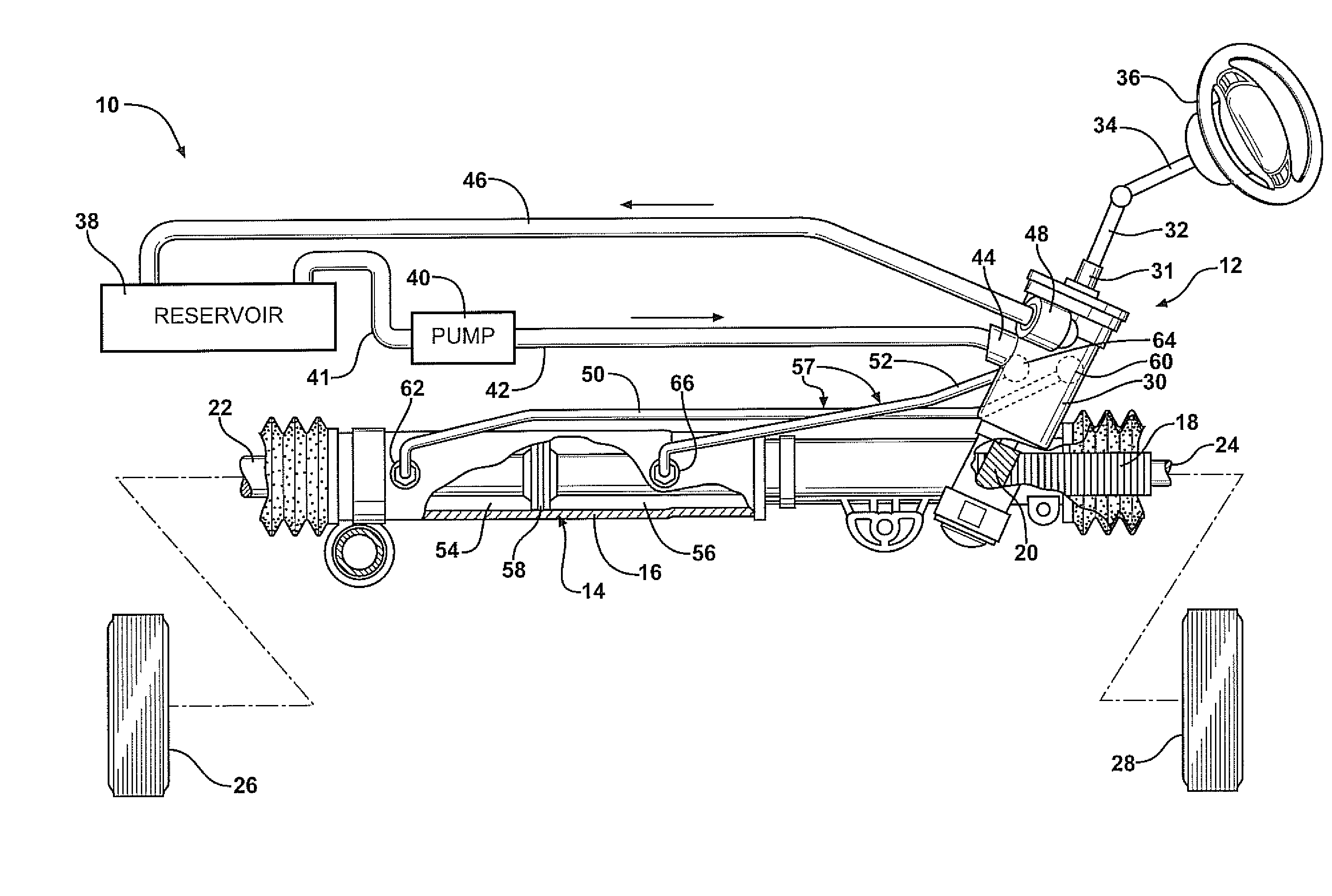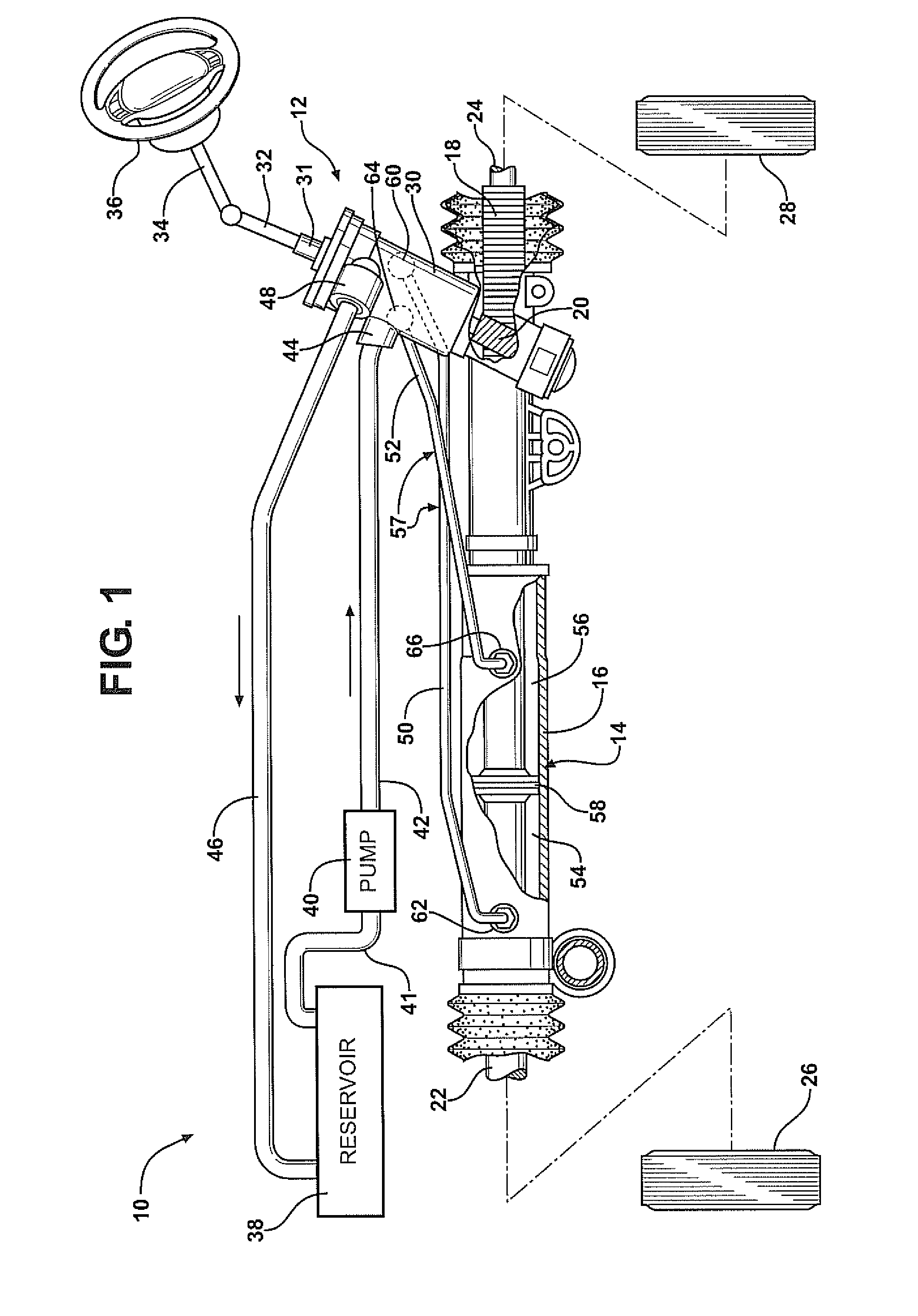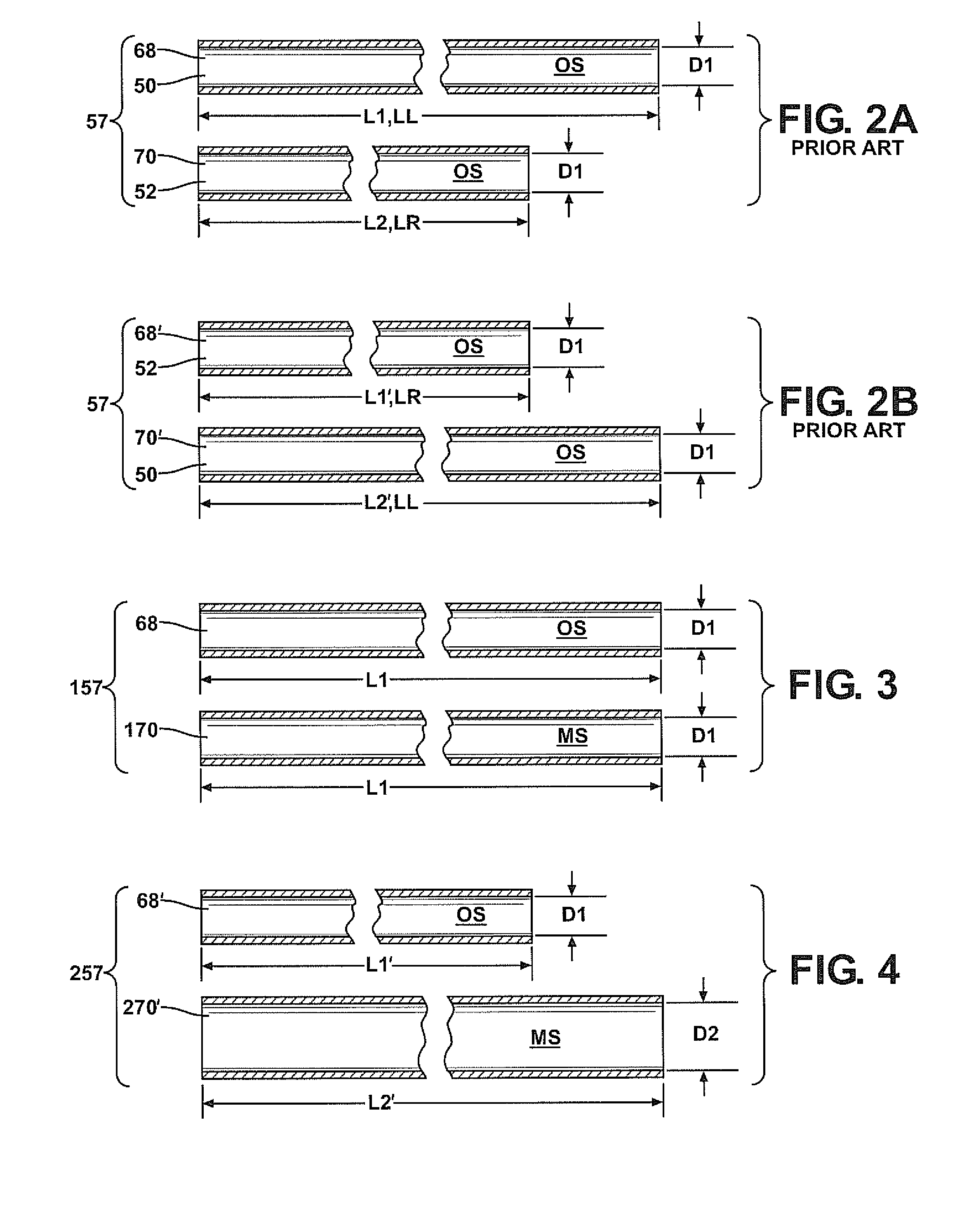Method of reducing steering instability in hydraulic power steering systems
a technology of hydraulic power steering and steering instability, which is applied in the direction of steering initiation, instruments, vessel construction, etc., can solve the problems of steering instability, steering instability, and vehicles with steering instability may exhibit excessive noise and/or vibration, so as to reduce steering instability, less steering instability, and less steering instability
- Summary
- Abstract
- Description
- Claims
- Application Information
AI Technical Summary
Benefits of technology
Problems solved by technology
Method used
Image
Examples
first embodiment
[0038]With reference to FIG. 2A, in the case where the steering instability is found in the steering direction associated with the shorter, right hand cylinder line 52, 70, second line length L2 of the second or right hand cylinder line 52, 70 is extended to match length L1 (which may be overall length LL) of the first or left hand cylinder line 50, 68, their common first flow areas or inner diameters D1 remaining unaltered from their original states, as shown in FIG. 3, wherein the resulting first embodiment altered pair of cylinder lines 157 includes modified second cylinder line 170 which produces substantially the same fluid inertance as that of its paired first cylinder line 68.
[0039]With reference to FIG. 2B, however, in the case where second cylinder line 70′ is longer, left hand cylinder line 50, it may not be possible to reduce its overall, second line length L2′, LL to match shorter overall length L1′, LR of first, right hand cylinder line 52, 68′. Therefore, application o...
second embodiment
[0040]Increasing the cross-sectional flow area will decrease the fluid inertance of a given line, and decreasing its cross-sectional flow area will increase its fluid inertance. As shown in FIG. 2B, the respective lengths L1′ and L2′ of first and second cylinder lines 68′ and 70′ are different, but through application of the inventive method the fluid inertances of cylinder lines 68′, 70′ are made substantially equivalent by increasing the inner diameter of longer second line 70′ from original, first flow area or first diameter D1 to larger, second flow area or second diameter D2 to yield modified second cylinder line 270′ of FIG. 4, which depicts second embodiment altered pair of cylinder lines 257 resulting from application of the inventive method.
[0041]Should the “stable” first cylinder line 68 be the longer, and the “unstable” second cylinder line 70 be the shorter of the pair of cylinder lines, as illustrated in FIG. 2A, and it not be possible or desirable to lengthen second cy...
fourth embodiment
[0042]A changed flow area of the second cylinder line 70, 70′ need not be constant or over its entire length in order to substantially match its fluid inertance to that of first cylinder line 68, 68′. Referring to FIG. 6, there is shown fourth embodiment altered pair of cylinder lines 457 resulting from the inventive method applied to a pair of lines wherein first line 68 is the longer of the two, and modified second line 470 is the shorter, i.e., their original states may be as lines 68, 70 illustrated in FIG. 2A. In FIG. 6, the second line length L2 of modified second cylinder line 470 includes a modified middle segment or portion LA disposed between opposite end segments or portions LB and LC. The overall length L2 of modified second line 470 shown in FIG. 6 may be substantially unchanged from that of original state second line 70 shown in FIG. 2A. In modified second line 470, the flow area or inner diameter of middle portion LA has been reduced from original first flow area or d...
PUM
 Login to View More
Login to View More Abstract
Description
Claims
Application Information
 Login to View More
Login to View More - R&D
- Intellectual Property
- Life Sciences
- Materials
- Tech Scout
- Unparalleled Data Quality
- Higher Quality Content
- 60% Fewer Hallucinations
Browse by: Latest US Patents, China's latest patents, Technical Efficacy Thesaurus, Application Domain, Technology Topic, Popular Technical Reports.
© 2025 PatSnap. All rights reserved.Legal|Privacy policy|Modern Slavery Act Transparency Statement|Sitemap|About US| Contact US: help@patsnap.com



